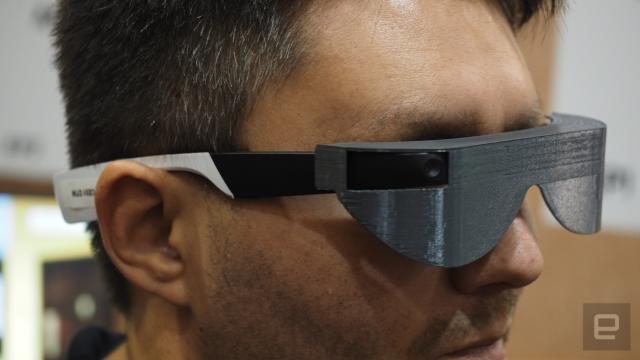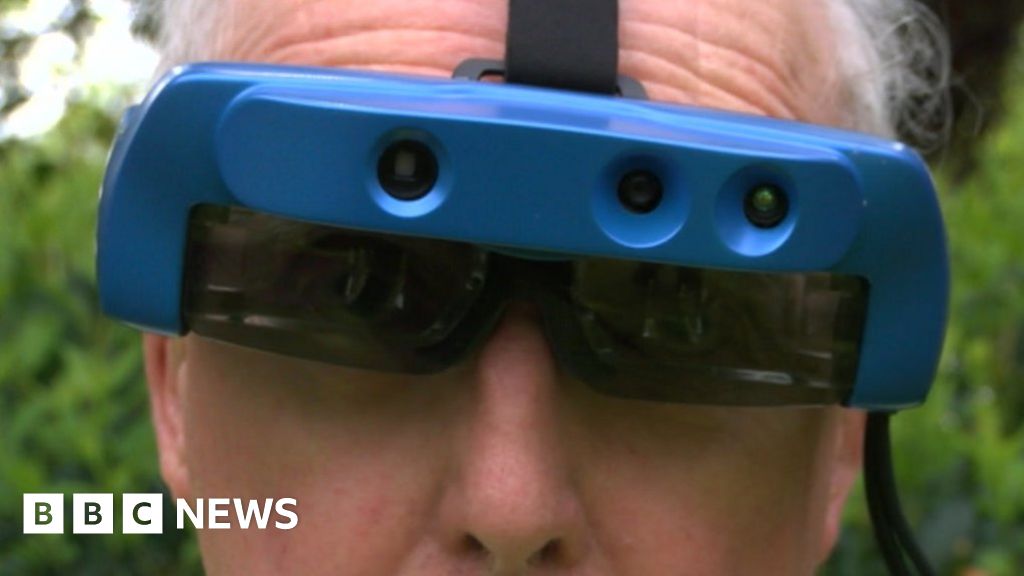Mobility Aids for Visually Impaired Users: Enhancing Independence and Navigation
Mobility Aids for Visually Impaired Users: Enhancing Independence and Navigation
Blog Article
Enhancing Ease Of Access Via Assistive Technology for the Blind
The assimilation of assistive technology for the blind stands for an essential advancement in accessibility, fundamentally changing how individuals navigate their environments and involve with culture. As we check out the diverse kinds of assistive devices and their substantial influences on everyday living, it ends up being important to examine how continuous technical developments are reshaping the landscape of support for the blind neighborhood.
Review of Assistive Innovation
Assistive innovation refers to a series of devices and software program made to improve the capabilities of people with disabilities, including those who are aesthetically impaired or blind. This innovation plays a vital function in advertising independence and boosting the lifestyle for users. By giving alternate techniques for accessing details and carrying out day-to-day jobs, assistive technology empowers people to navigate their atmospheres extra successfully.
The development and implementation of assistive innovation embrace a variety of principles targeted at promoting access. These concepts consist of user-centered style, which prioritizes the needs and preferences of the individual, and the combination of technology right into everyday activities. Such developments ensure that assistive devices are not just useful however likewise instinctive and simple to make use of.
In addition, assistive modern technology includes a varied range of services, from low-tech alternatives like magnifiers to modern technologies such as display readers and Braille display screens. The ongoing development of this field is driven by the need to address the distinct challenges faced by individuals with visual problems (Wearable technology for low vision). As modern technology continues to advance, the potential for improving ease of access and advertising inclusivity stays promising, ultimately contributing to a much more fair society

Kinds of Assistive Instruments
Various sorts of assistive devices are offered to sustain people that are visually damaged or blind, each made to address specific requirements and difficulties. These gadgets can be generally classified into three main kinds: low-tech, mid-tech, and high-tech services.
Low-tech devices include products such as magnifiers, Braille tags, and responsive maps. These are relatively simple devices that enhance the individual's capacity to engage with their setting without calling for complex technology.
Mid-tech gadgets usually include a lot more innovative attributes, such as digital magnifiers and mobile Braille note-takers. These devices can provide functionalities like speech outcome, permitting individuals to accessibility information more effectively.

Influence On Daily Living
The accessibility of different assistive gadgets dramatically enhances the high quality of life for individuals that are blind or visually impaired, influencing their everyday living in extensive methods. By incorporating modern technologies such as display viewers, Braille shows, and audio description solutions into their regimens, individuals obtain better autonomy and freedom. These tools assist in accessibility to information, allowing people to carry out daily tasks, such as reading emails, navigating public rooms, and delighting in media material.
Moreover, assistive gadgets equip individuals to involve even more totally in social interactions additional resources and community activities. The ability to use smartphones equipped with accessibility functions permits smooth communication and link with others. This connection cultivates a sense of belonging and minimizes feelings of isolation.
In specialist settings, assistive technology sustains performance by permitting people to total work tasks effectively. Devices like voice acknowledgment software and specialized magnification devices make it possible for customers to take part in the labor force on equivalent ground with their sighted peers.

Developments in Innovation
Current technological improvements have dramatically transformed the landscape of devices offered for people that are blind or visually impaired. The combination of expert system (AI) and machine learning has actually generated applications see post that enhance navigation and item acknowledgment. For instance, mobile phone applications can currently utilize AI to recognize and explain surroundings in real-time, giving customers with important contextual info.
Furthermore, innovations in haptic innovation have caused the advancement of clever walking sticks furnished with sensing units that discover challenges and offer tactile responses. This encourages customers to navigate their environment with increased self-confidence and freedom. Additionally, advancements in text-to-speech software application and braille display screens have improved the access of electronic material, enabling smooth communication with different media.
Wearable innovations, such as wise glasses, are additionally making strides in aiding visual impairment. As technology continues to progress, the possibility for even more transformative devices continues to be on the horizon.
Future Trends and Innovations
As technology rapidly proceeds, the future of assistive tools for people who are blind holds tremendous assurance. Developments in expert system (AI) and machine knowing are positioned to revolutionize the method blind users communicate with their settings. AI-driven applications are being created to improve item recognition, enabling individuals to identify and browse their environments with greater ease and precision.
Additionally, innovations in haptic feedback innovation are enabling dilated eye exam the creation of tactile maps and navigation help that supply real-time info via touch. These technologies not only enhance mobility but additionally foster independence. Additionally, wearable tools geared up with augmented fact (AR) attributes are emerging, using customers visual info through sound descriptions, thus bridging the void in between the digital and physical worlds.
Moreover, the combination of wise home innovation provides brand-new opportunities for accessibility, allowing people to manage their living atmospheres via voice commands or mobile phone applications. As collaboration in between tech programmers and the blind neighborhood continues, the focus on user-centered design will certainly guarantee that future developments are tailored to meet the distinct demands of this populace (Wearable technology for low vision). The trajectory of assistive innovation promises a more comprehensive and empowering future for people that are blind
Verdict
In verdict, assistive technology plays a vital function in boosting access for people with visual problems. Constant developments in innovation and user-centered style make sure that these devices provide properly to the unique requirements of the blind area.
The integration of assistive modern technology for the blind stands for a crucial development in ease of access, basically changing exactly how people navigate their settings and involve with culture.Assistive innovation refers to an array of tools and software program developed to boost the capabilities of individuals with handicaps, including those who are visually impaired or blind. Wearable technology for low vision.As innovation swiftly proceeds, the future of assistive devices for individuals who are blind holds tremendous guarantee. The trajectory of assistive modern technology assures a much more comprehensive and empowering future for people that are blind
In conclusion, assistive technology plays an essential function in boosting ease of access for people with aesthetic disabilities.
Report this page